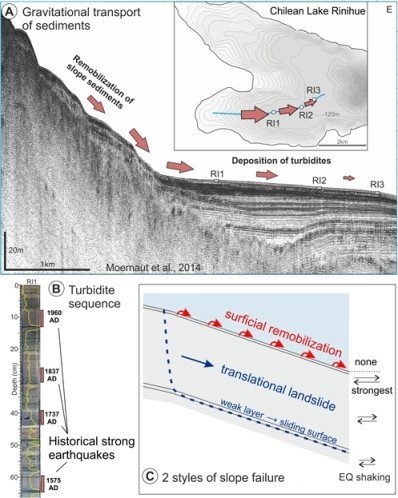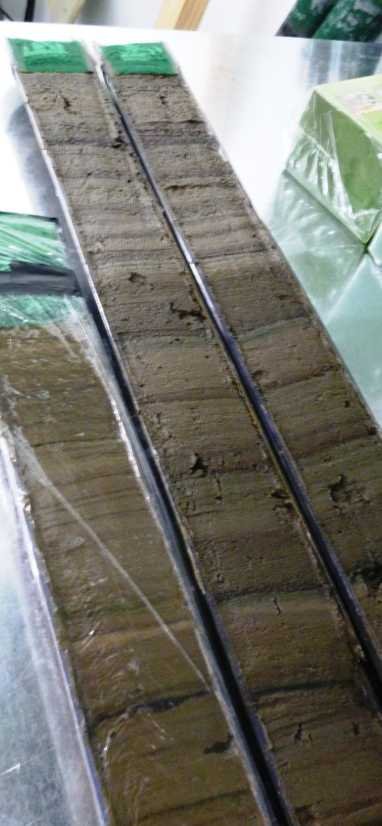Earthquake-triggered remobilization of surficial sediments: a newly-discovered sediment dynamic process at ocean margins and lacustrine basins.
Nachwuchsförderung (NWF) – University of Innsbruck. PI Jasper Moernaut (2016-2018)

Turbidite paleoseismology is a rapidly-growing discipline with high potential to improve the assessment of earthquake hazards in different settings worldwide. It builds upon the assumption that strong earthquake shaking destabilizes subaquatic slopes leading to specific deposits (turbidites) in ocean basins and lakes. Surprisingly, very few studies have been executed for understanding how seismic shaking affects slope stability and thus we do not know how reliable the turbidite paleoseismic method actually is.
In a recent study of Chilean lakes, we discovered some hints suggesting that a hitherto unknown sedimentological process took place during earthquake shaking, i.e. the remobilization of only a few cm of surficial slope sediments (Moernaut et al., 2015). Interestingly, a similar conclusion has been drawn by colleagues studying sediments at the Japan Trench (McHugh et al., 2016), underlining a possible worldwide significance of this newly-discovered process.
The presented project is a dedicated effort aiming at better identifying, characterizing and process understanding of earthquake-triggered remobilization of surficial slope sediments. It is situated at the interface of soil mechanics, fluid dynamics, sedimentology and seismology, and combines geochemical, geotechnical and geophysical core analyses in an unprecedented high resolution.

We combine these data with comparative tests in our “natural laboratory”, the Achensee (Tyrol, Austria). This project fully complements ongoing international research projects in Chile and Japan and will impose large implications for turbidite paleoseismology and its use to better assess earthquake hazards.
References:
McHugh, C.M., Kanamatsu, T., Seeber, L., Bopp, L., Cormier, M.-H., Usami, K., 2016. Remobilization of surficial slope sediment triggered by the A.D. 2011 Mw 9 Tohoku-Oki earthquake and tsunami along the Japan Trench. Geology. doi:10.1130/G37650.1
Moernaut, J., Van Daele, M., Strasser, M., Clare, M.A., Heirman, K., Viel, M., Cardenas, J., Kilian, R., Ladrón de Guevara, B., Pino, M., Urrutia, R., De Batist, M., 2015. Lacustrine turbidites produced by surficial slope sediment remobilization: a mechanism for continuous and sensitive turbidite paleoseismic records. Marine Geology. Doi: 10.1016/j.margeo.2015.10.009
